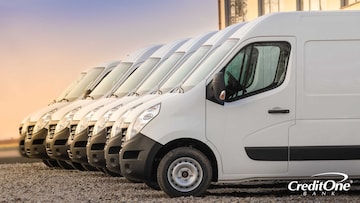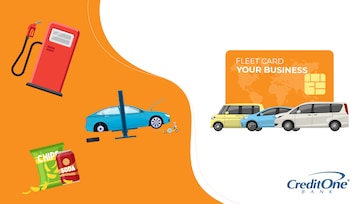You pull up to the pump, shut off your engine, and reach for your wallet. You’ve got enough cash in your wallet to fill your tank, but you also have a credit card or two in there, both of which the gas station accepts.
Hmmm. Cash or credit? you ask yourself.
While they’re both viable options, here are a few reasons to opt for purchasing that petrol with your credit card over cash.
1. You May Be Able to Better Maintain Social Distancing with a Credit Card
With the advent of the coronavirus pandemic, minimizing contact with others and social distancing is a major concern these days. Most modern-day gasoline pumps have a credit card terminal on them, so you should be able to pay for and pump your gas right then and there at the pump island, without having to go inside and expose yourself to other people.
If the pump doesn’t have a terminal, the terminal is broken, or you are in one of the two U.S. states that have restrictions on pumping your own gas, you may still have to go inside the gas station. But, for the most part, filling up with a credit card is typically a matter of inserting your card, entering your billing zip code, and then filling your tank—without a long walk and potentially a long line of other people inside the gas station.
2. A Credit Card May Be Cleaner
Handling cash, which is believed to be able to transmit the coronavirus and a whole host of other microbes, can be riskier than handling a credit card. While the coronavirus and other germs can live on the surface of a credit card, there’s a big difference between cash and your credit card: You are the one primarily handling your credit card—especially since the proliferation of terminals has minimized how often you hand your card over to someone else—while cash is touched by everyone it comes into contact with.
It’s also possible to clean your credit card, if you’re concerned. Most people are not going to bother disinfecting the cash in their wallets, which could be a never-ending process given how cash is so transient. While money laundering is a real thing, it doesn’t mean to literally wash your cash.
3. Using a Credit Card Makes It Easier to Track Gas Expenses
Every time you fill your tank and pay with a credit card, that purchase should show up on your credit card statement. This makes it very easy to keep track of how much you’re spending in gas each month for budgeting purposes, or to budget how much you spent in gas while on a road trip. If your gas expenditures are tax deductible or reimbursable, using a credit card and having the charges appear on your monthly statement also provides a nice backup should you misplace or lose any gas receipts.
4. Carrying a Credit Card is More Convenient
We’ve all been there—we think we have enough cash on us, only to discover we’ve only got a buck or two left. If that’s the case, and you want to buy gas with cash, you have to now find an ATM first. Or, if you’re on a road trip and you’re planning on paying for your fuel in cash, you may have to carry a big wad of bills.
With a credit card, one little 3.37” x 2.125” piece of plastic or metal gives you as much purchasing power as a fat wad of cash. It also offers protection against theft or loss, which cash does not.
Wait – I can enjoy all of the above advantages with a debit card as well! you may be screaming inside your head right now.
Yes, this is true—although technically a credit card does offer more consumer fraud protection than a debit card. But paying for gas with a credit card also offers these advantages over cash and a debit card.
5. Using a Credit Card Doesn’t Immediately Deplete Your Cash Reserves
When you purchase gas with a credit card, you don’t actually have to make a payment on that gas until your credit card payment is due. If you use cash or a debit card, that money is gone and immediately out of your pocket or your bank account. Yes, you still eventually have to pay for that gas purchase when you use a credit card. But if you’re on a tight budget and waiting until your next paycheck, or you’re on a road trip and need your available funds for other expenses, postponing paying for that gas purchase could make things easier.
6. You Could Earn Rewards with a Credit Card
For many of us, gas is a purchase we make weekly or even more frequently. So using a rewards credit card to make this recurring purchase is a great way to earn cash back, airline miles, points, or other rewards just for buying something you need anyway. If your rewards card rewards all purchases, then gasoline obviously falls under “all.” Other credit cards, such as Credit One Bank Platinum Visa cards, specifically categorize gas purchases as one of the everyday purchases eligible for cash back rewards. Cash and most debit cards don’t offer any rewards.
But wait! you may be screaming inwardly (or outwardly) again. What about gas stations that offer a discounted per-gallon price for using cash instead of a credit card?
Good point, but you don’t have to scream. Yes, some gas stations and station chains do offer a discounted price for using cash over a credit card. This is because they are charged processing fees when you use a credit card, which are typically around 2% of the purchase, so they make more profit if you use cash.
But it’s not about how much the gas station will save—it’s about how much you’ll save.
If the cash price per gallon is lower than the credit card price, then it is simply a matter of doing the math. So, let’s say the price of a gallon of gas at your gas station of choice is $3.00 if you pay with cash; $3.10 if you use a credit card. Well, if your cash back credit card rewards you with 5% on gasoline purchases, that means if you buy 15 gallons of gas with your credit card, you’ll pay $46.50 ($3.10 x 15) and get $2.33 ($46.50 x .05) cash back on your purchase, making your total gas purchase $44.17 ($46.50 - $2.33).
If you make the same purchase with cash, your total will be $45 ($3.00 x 15), so you’ll save $0.83 by using your rewards credit card. This may not seem like much but, assuming the price of gas doesn’t change all year (not an accurate assumption, but this is just for illustrative purposes), if you put 15 gallons in your tank each week and pay with your rewards credit card every time, you will save $43.16 over the course of a year (52 weeks x $0.83).
While many gas stations might prefer that you use cash, for convenience, cleanliness, and rewards-earning potential, a credit card may be the way to go for paying for purchases at the pump. Ready to see if you qualify for a Credit One Bank rewards card that earns you cash back rewards on gasoline purchases. See if you Pre-Qualify in less than a minute—without harming your credit score!
After realizing he couldn’t pay back his outrageous film school student loans with rejection notices from Hollywood studios, Sean focused his screenwriting skills on scripting corporate videos. Videos led to marketing communications, which led to articles and, before he knew it, Sean was making a living as a writer. He continues to do so today by leveraging his expertise in credit, financial planning, wealth-building, and living your best life for Credit One Bank.




